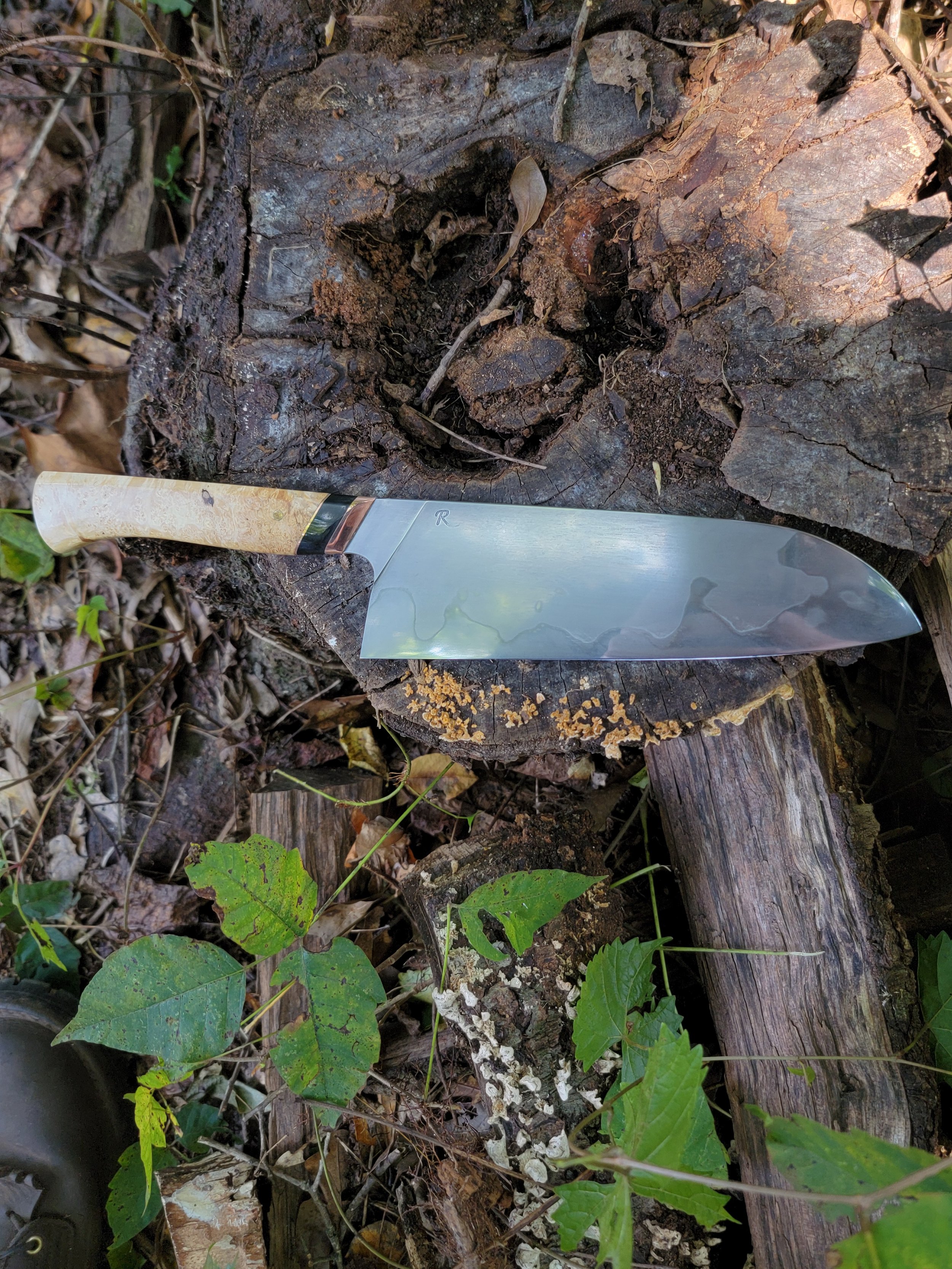 Image 1 of 8
Image 1 of 8

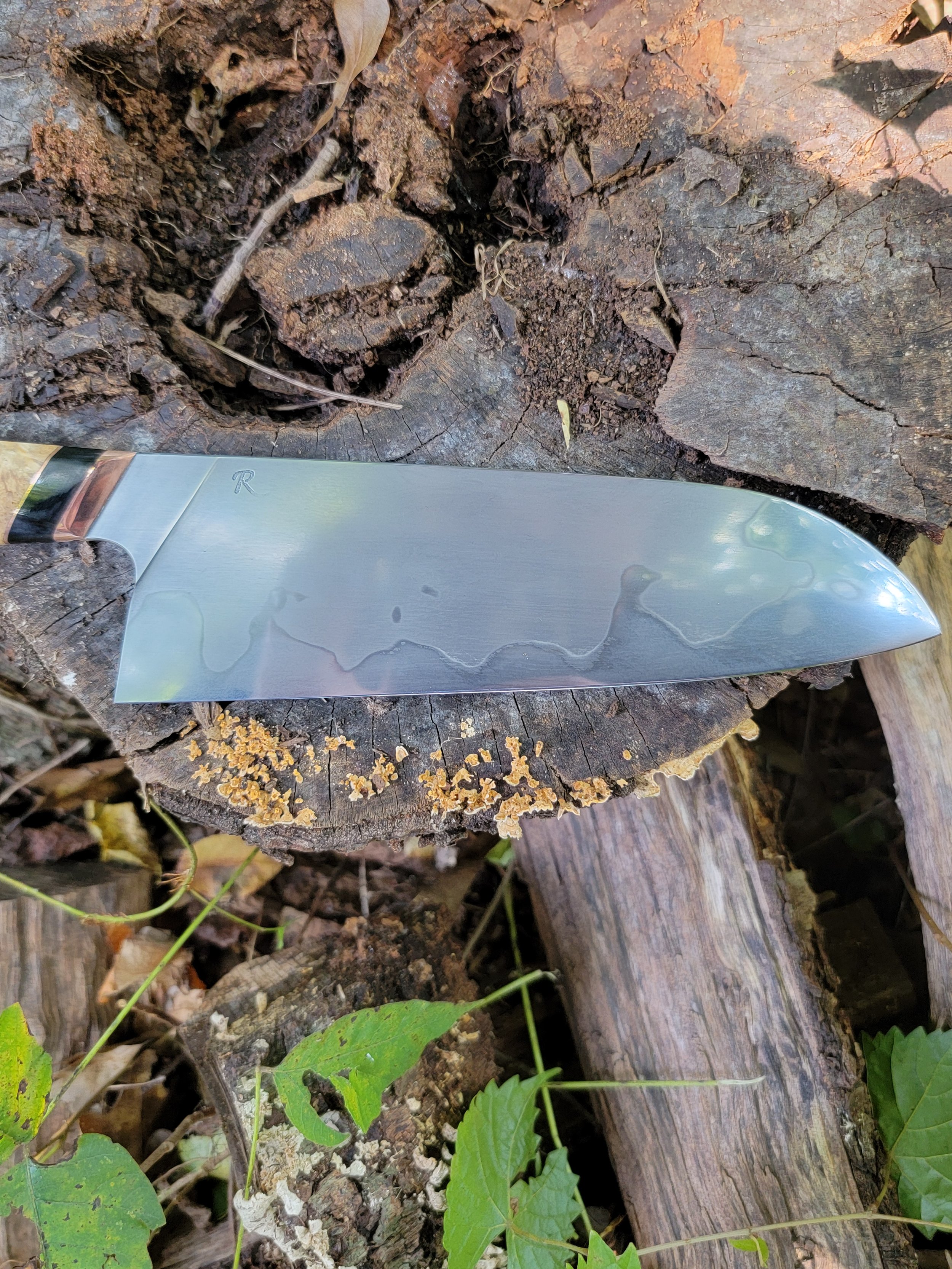 Image 2 of 8
Image 2 of 8

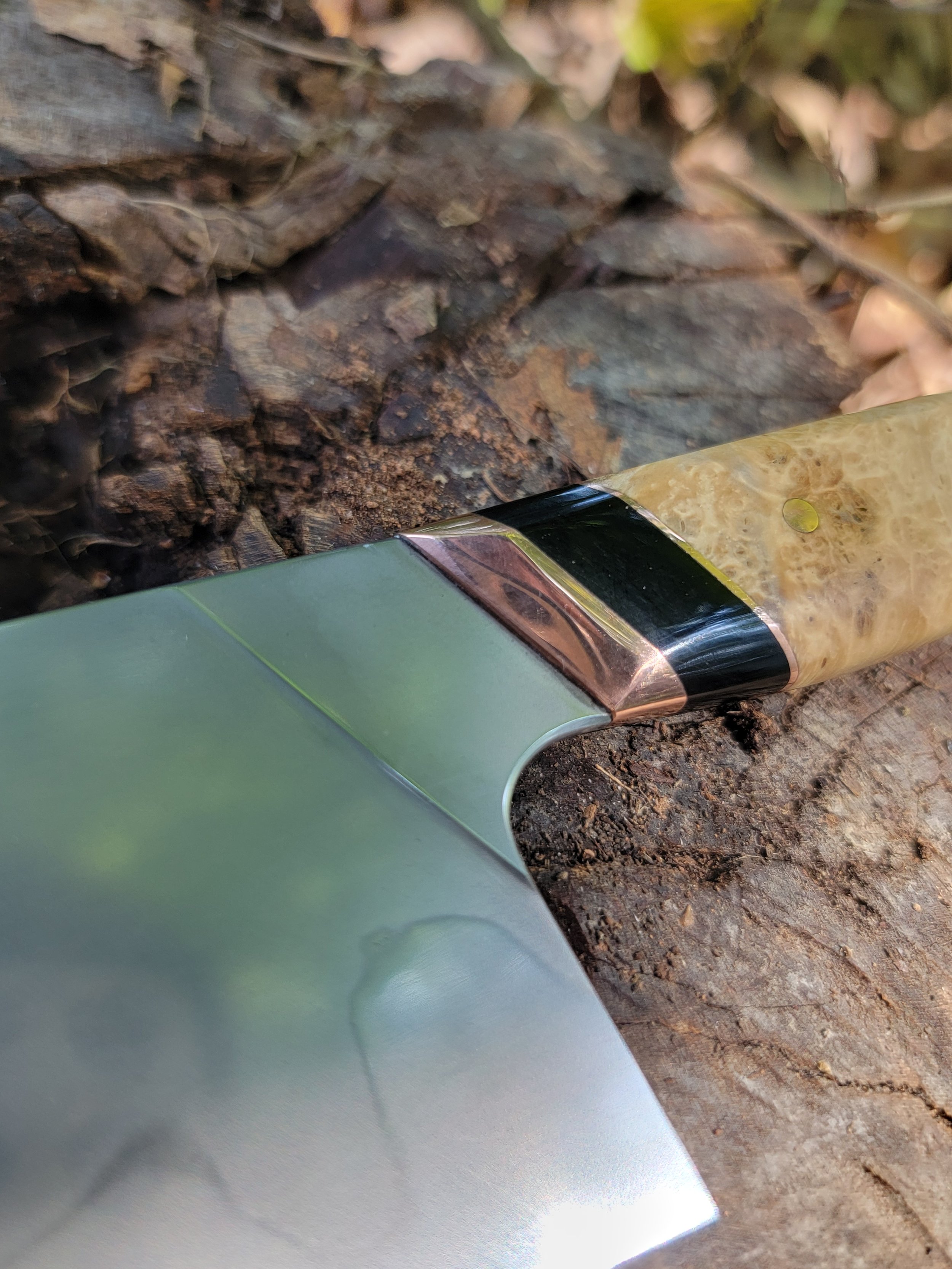 Image 3 of 8
Image 3 of 8

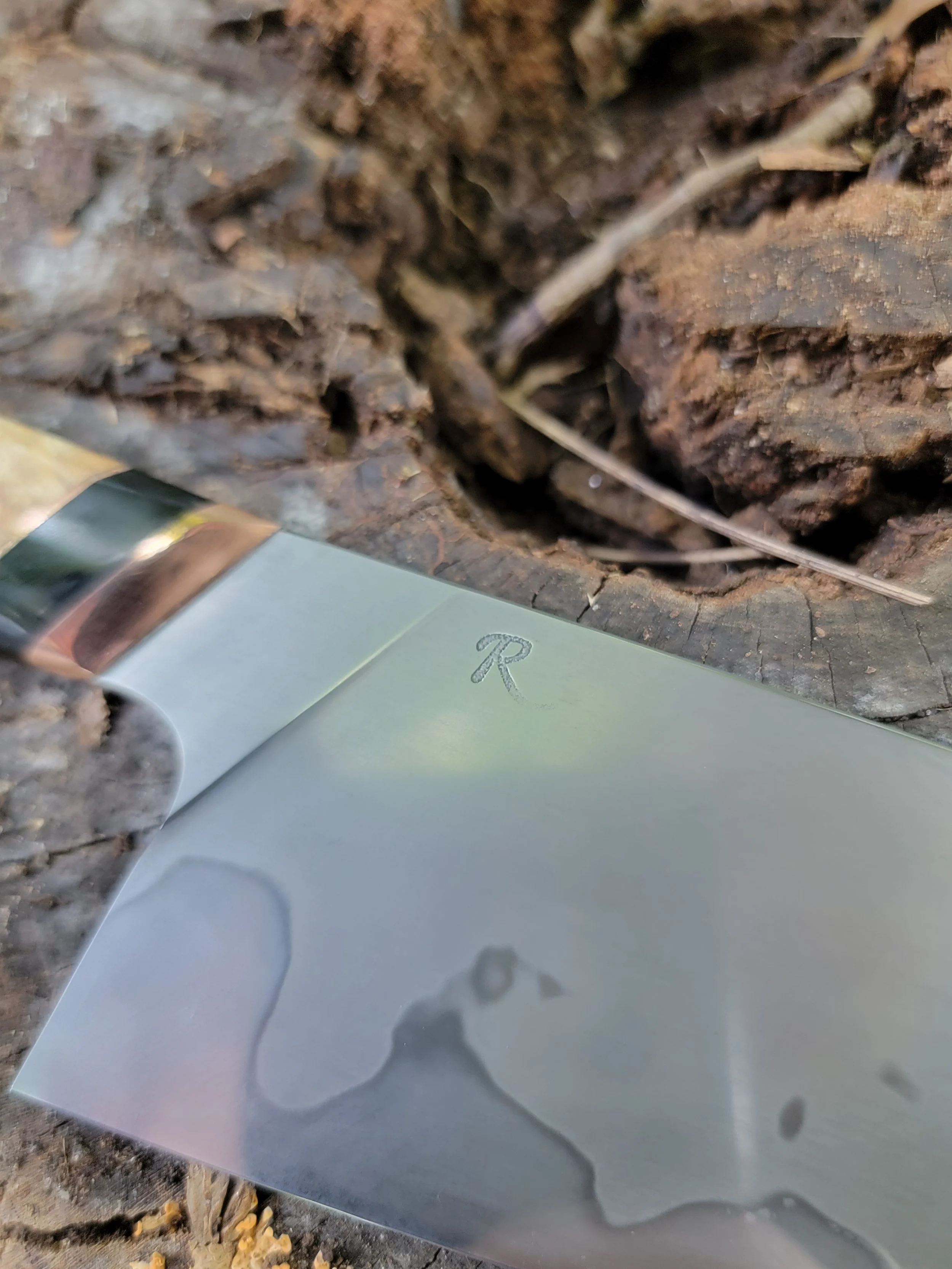 Image 4 of 8
Image 4 of 8

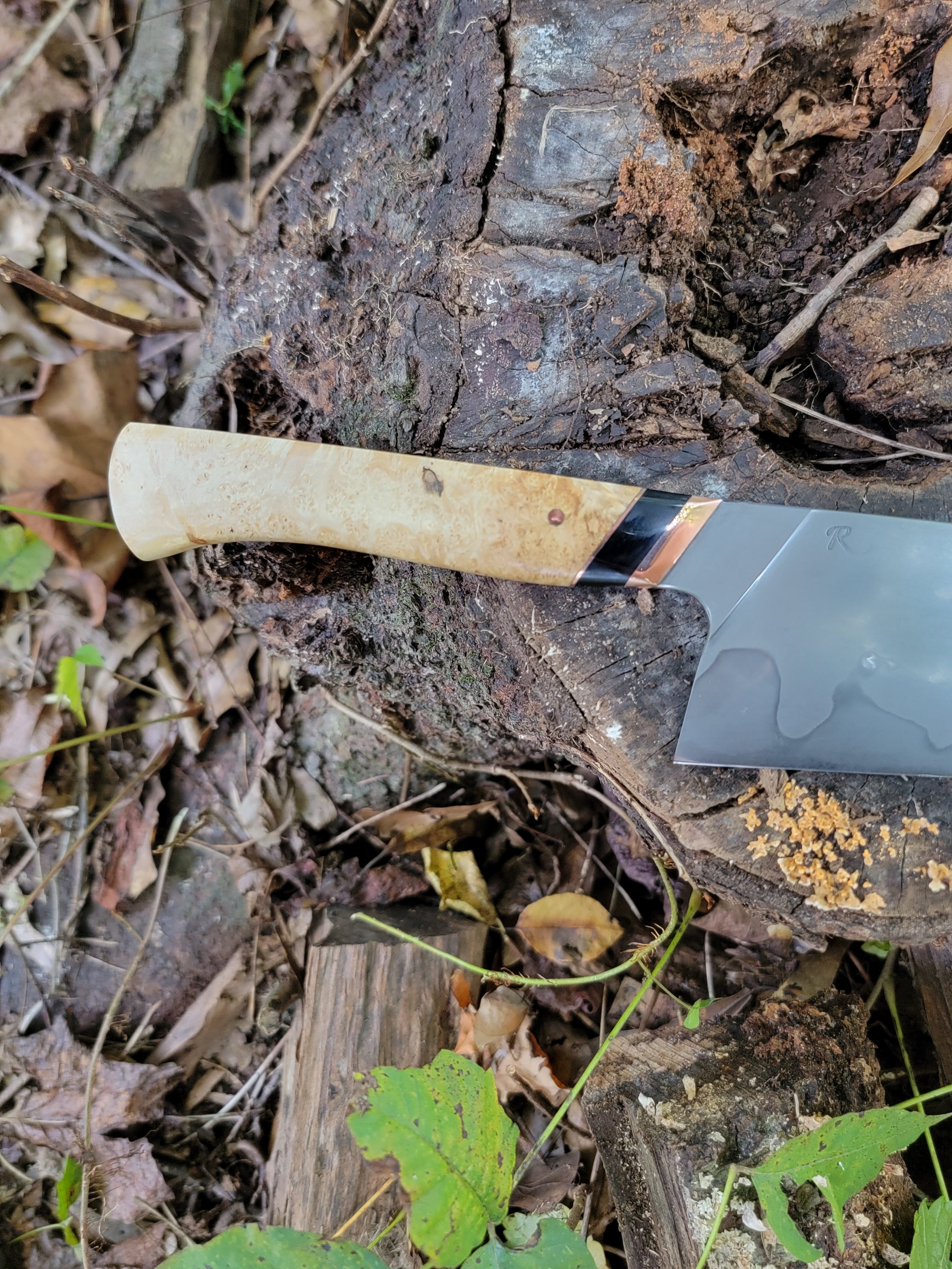 Image 5 of 8
Image 5 of 8

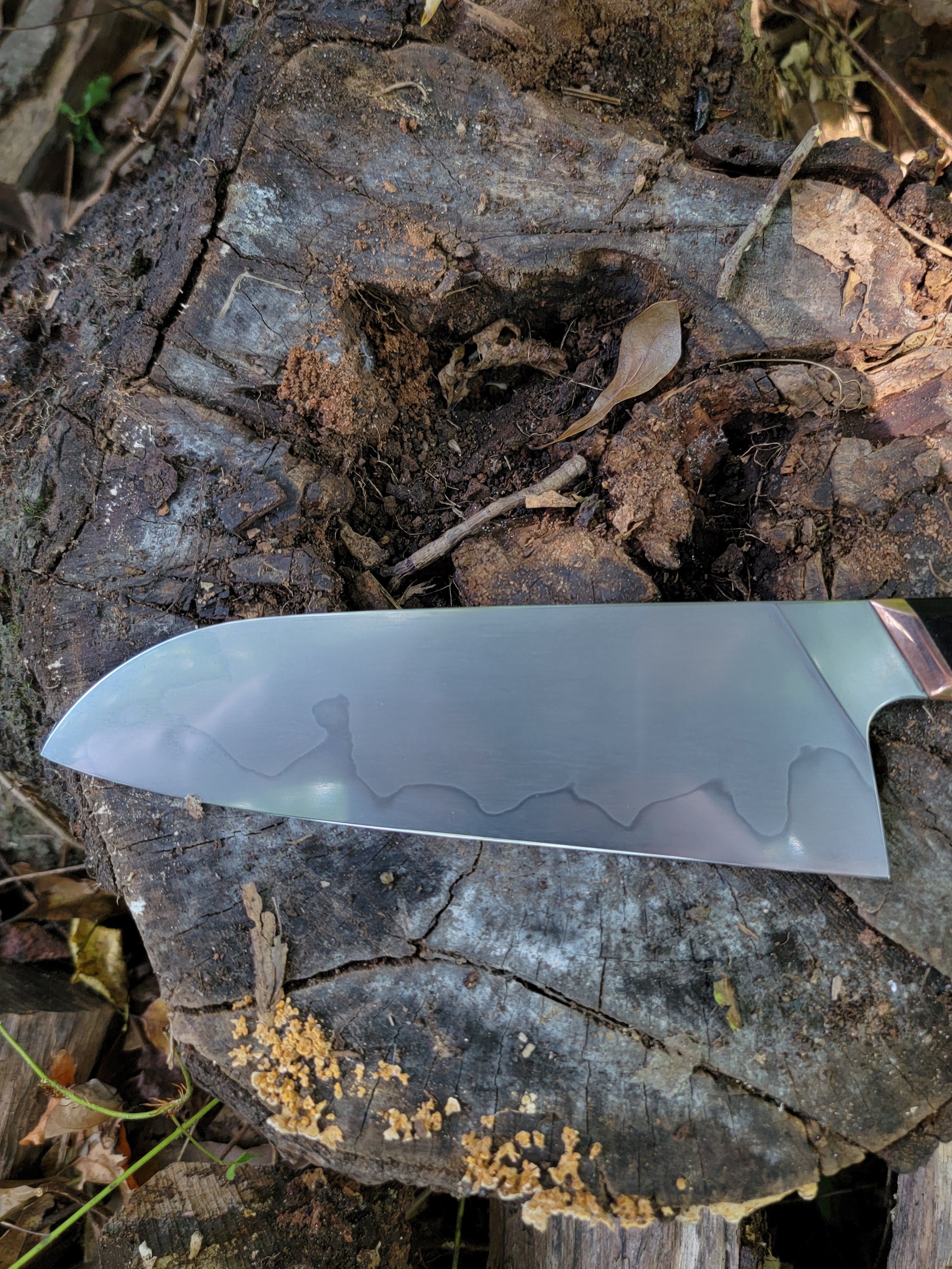 Image 6 of 8
Image 6 of 8

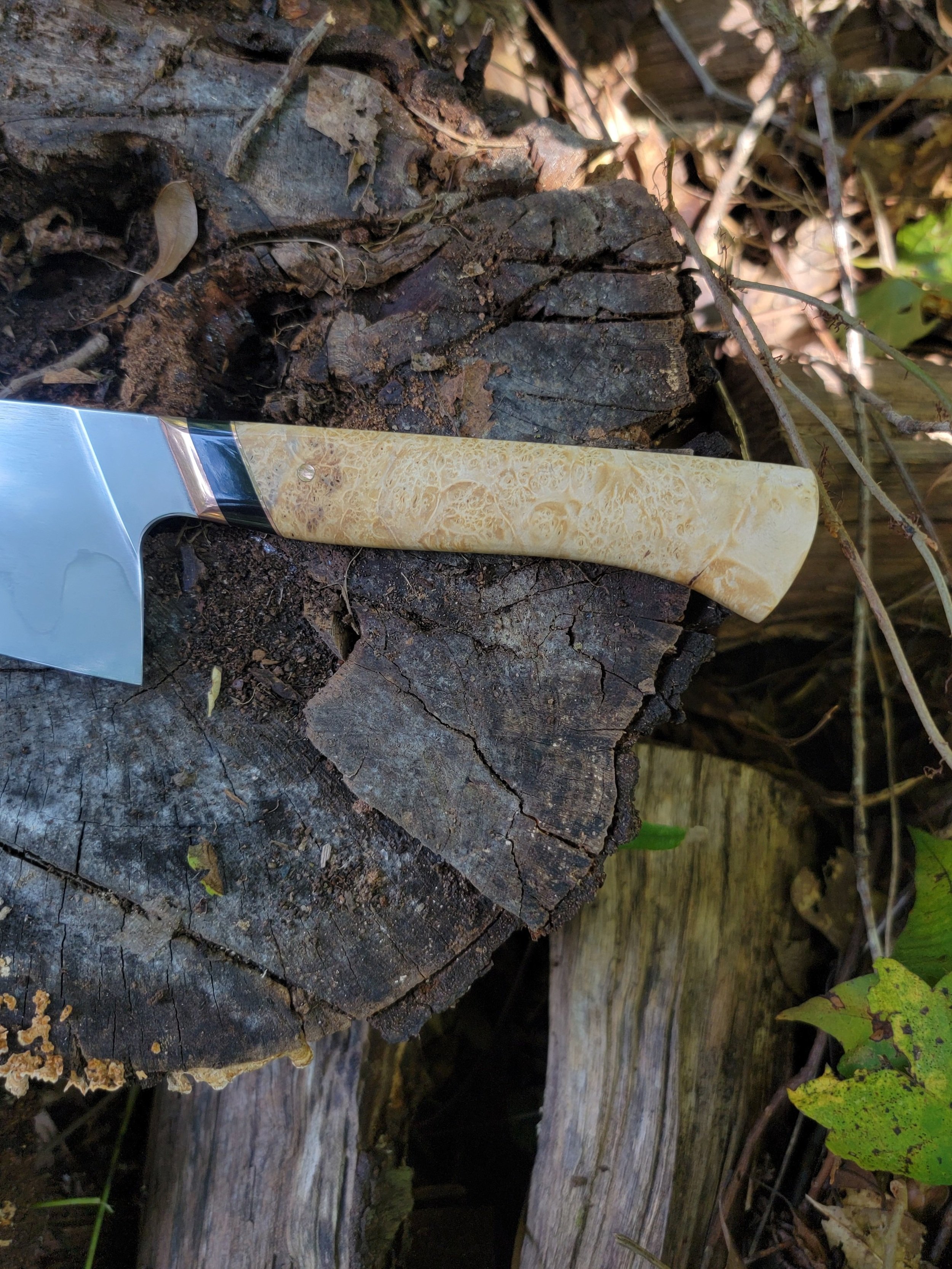 Image 7 of 8
Image 7 of 8

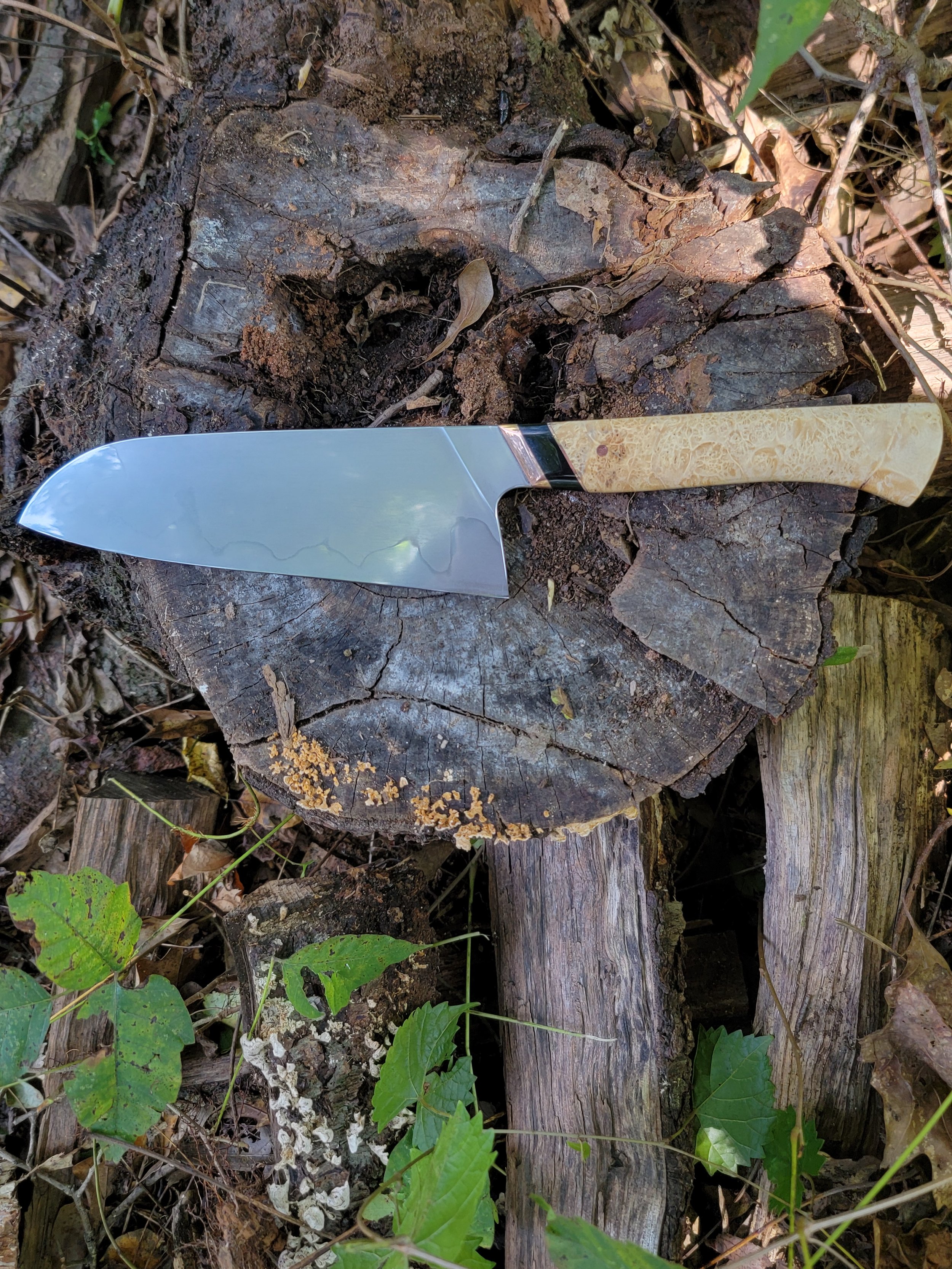 Image 8 of 8
Image 8 of 8

Santoku in Carbon with Hamon
The santoku is a Japanese style kitchen knife that very versatile in the kitchen. Santoku in Japanese translates to the 3 virtues, meat fish and vegetables. Hence making it a jack of all trades and very versatile. The santoku has a flatter blade than a western style knife, a flatter blade can be a matter of preference but it does allow for more edge contact though the food at once, lends itself better to push chopping, and makes scooping food off the cutting board easier. One of the purposes behind the shape of the santoku is scooping food off the cutting board easier for the cook.
Knife details:
Blade length: 6.75”
Heel height: 2.1”
Handle length: 5”
Steel: 26c3 Carbon
Handles material: Box elder burl, Buffalo Horn, and copper
Grind type: Walkschliff
Edge thickness and hardness: .005” 64 hrc
Edge angle 15 degrees
Weight: 4.3 oz
A hamon is a style of differential heat treatment started by the Japanese during the samurai era. It is the act of putting clay on the spine of the blade making the edge hard and the spine soft. After the knife is etched and extensively polished, revealing the hard and soft parts of the blade.
The santoku is a Japanese style kitchen knife that very versatile in the kitchen. Santoku in Japanese translates to the 3 virtues, meat fish and vegetables. Hence making it a jack of all trades and very versatile. The santoku has a flatter blade than a western style knife, a flatter blade can be a matter of preference but it does allow for more edge contact though the food at once, lends itself better to push chopping, and makes scooping food off the cutting board easier. One of the purposes behind the shape of the santoku is scooping food off the cutting board easier for the cook.
Knife details:
Blade length: 6.75”
Heel height: 2.1”
Handle length: 5”
Steel: 26c3 Carbon
Handles material: Box elder burl, Buffalo Horn, and copper
Grind type: Walkschliff
Edge thickness and hardness: .005” 64 hrc
Edge angle 15 degrees
Weight: 4.3 oz
A hamon is a style of differential heat treatment started by the Japanese during the samurai era. It is the act of putting clay on the spine of the blade making the edge hard and the spine soft. After the knife is etched and extensively polished, revealing the hard and soft parts of the blade.
The santoku is a Japanese style kitchen knife that very versatile in the kitchen. Santoku in Japanese translates to the 3 virtues, meat fish and vegetables. Hence making it a jack of all trades and very versatile. The santoku has a flatter blade than a western style knife, a flatter blade can be a matter of preference but it does allow for more edge contact though the food at once, lends itself better to push chopping, and makes scooping food off the cutting board easier. One of the purposes behind the shape of the santoku is scooping food off the cutting board easier for the cook.
Knife details:
Blade length: 6.75”
Heel height: 2.1”
Handle length: 5”
Steel: 26c3 Carbon
Handles material: Box elder burl, Buffalo Horn, and copper
Grind type: Walkschliff
Edge thickness and hardness: .005” 64 hrc
Edge angle 15 degrees
Weight: 4.3 oz
A hamon is a style of differential heat treatment started by the Japanese during the samurai era. It is the act of putting clay on the spine of the blade making the edge hard and the spine soft. After the knife is etched and extensively polished, revealing the hard and soft parts of the blade.